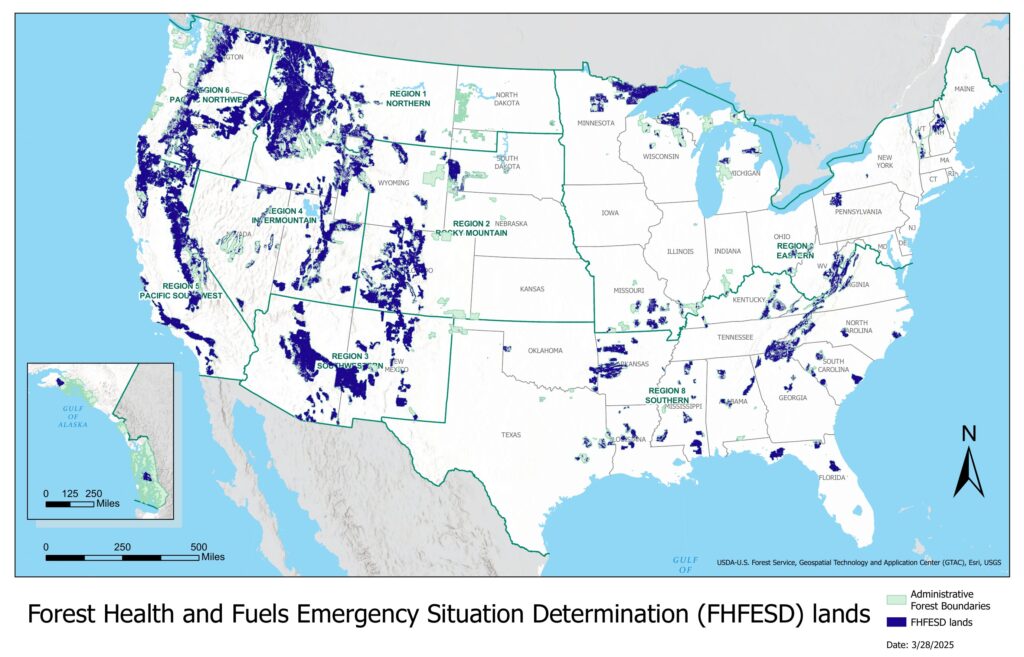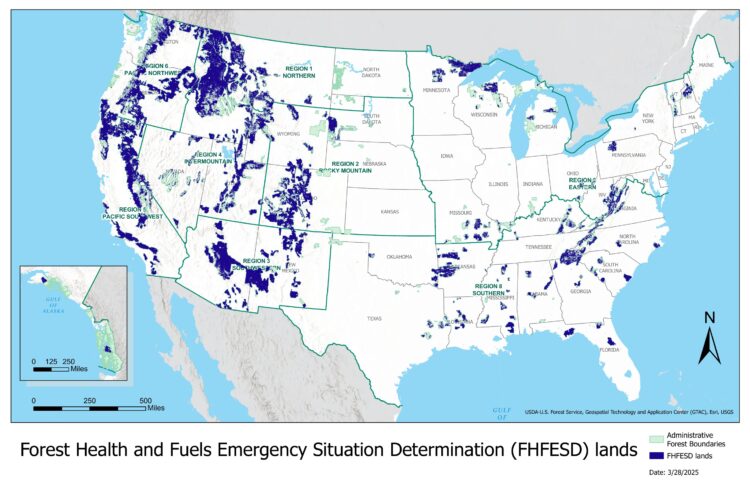On April 3, 2025, United States Secretary of Agriculture Brooke Rollins issued a directive that could change the physical landscape of our nation as well as the political landscape for future environmental policy. Stemming from President Trump’s controversial sweeping Executive Orders, this directive has startled many in the outdoor community and environmental conservationists. Over 100 million acres of national forest lands are under risk from logging.
Proponents of this directive pose that this is a chance to increase America’s timber production and optimize resource management. Those who challenge the directive argue that this memo bypasses environmental laws and wrongly shifts the focus of Forest Service wildfire mitigation work.
The Secretarial Memorandum
In the beginning of the month of April, the United States Department of Agriculture released Secretary’s Memorandum 1078-006 in Washington D.C. In this memorandum, Secretary Rollins established an “Emergency Situation Determination” on approximately 112,646,000 acres of National Forestry System (NFS) Land. In the Directive section of the memorandum, Rollins claims that 66,940,000 of these acres are rated as very high or high wildfire risk which are determined to be an emergency situation as defined by the Infrastructure Investment and Jobs Act (IIJA). She then goes on to say that she has determined another 78,800,000 acres of National Forestry System lands are experiencing declining forest health and are at risk of increased tree mortality over the next 15 years. She then states that an additional 33,846,000 acres of NFS land are also under wildfire and disease risk. When added up, the 112,646,000 acres of land make up a staggering 59 percent of all National Forestry System lands.

In the Purpose section of the memorandum, Secretary Rollins cites Executive Order 14225, Immediate Expansion of American Timber Production, signed by President Trump as the reason and inspiration for this memo. For many, this was the first red flag as this Executive Order has been very controversial and legally questioned by environmental advocates. She states how the order highlights the importance of domestic timber production. She then goes on to reason that the United States has a large supply of untapt timber resources that would meet the needs of our domestic timber production. If this domestic production increased, it could protect our national and economic security as well as make the people of America prosper. She also states that increasing domestic timber production would create more jobs, further contributing to the prosperity of the United States. Interestingly, and perhaps one of the more contentious points, she also claims that the logging would actually improve fish and wildlife habitats.
Pushback
Though some see the memorandum as a major win for domestic timber production and resource management, not everyone sees eye-to-eye. Opponents to the directive contend that this is an attack on the Forest Service and public lands. First, many argue that it makes the focus of the Forest Service timber production rather than environmental protection. This shift in purpose can leave other protected lands vulnerable to harmful practices such as logging.
Another argument against the directive is that it uses the “emergency” designation to short-cut environmental laws designed to protect against habitat destruction and endangered species. By designating almost 60 percent of all national forests to be in a state of “emergency,” the government essentially has free reign to do what they please with these lands. This reduces the public’s involvement and say in the matter. It also bypasses any environmental safeguards that could have prevented logging.
One last argument that is made is the downright disagreement with the claim that this will improve wildlife habitats. Many do not see the rationale behind this claim made by Secretary Rollins as logging trees is widely known to contribute to habitat destruction and damage to wildlife. Taking out the trees in these protected forests can uproot the interconnected ecosystems in those habitats which harms any species that inhabit them.
Most opponents blame Secretary Rollins’ actions on the Trump Administration as they seem to continuously take actions with no environmental awareness such as rescinding environmental regulations, withdrawing the United States from the Paris Climate Accord, and slashing budgets for the National Park Service. As Josh Hicks, the Conservation Campaigns Director at The Wilderness Society, said, “Don’t be fooled: the Trump Administration and its allies in Congress aren’t trying to solve the wildfire crisis or protect communities threatened by it. Instead, they are aiming to deepen the pockets of private industry to log across our shared, public forests, while sidestepping public review.”













